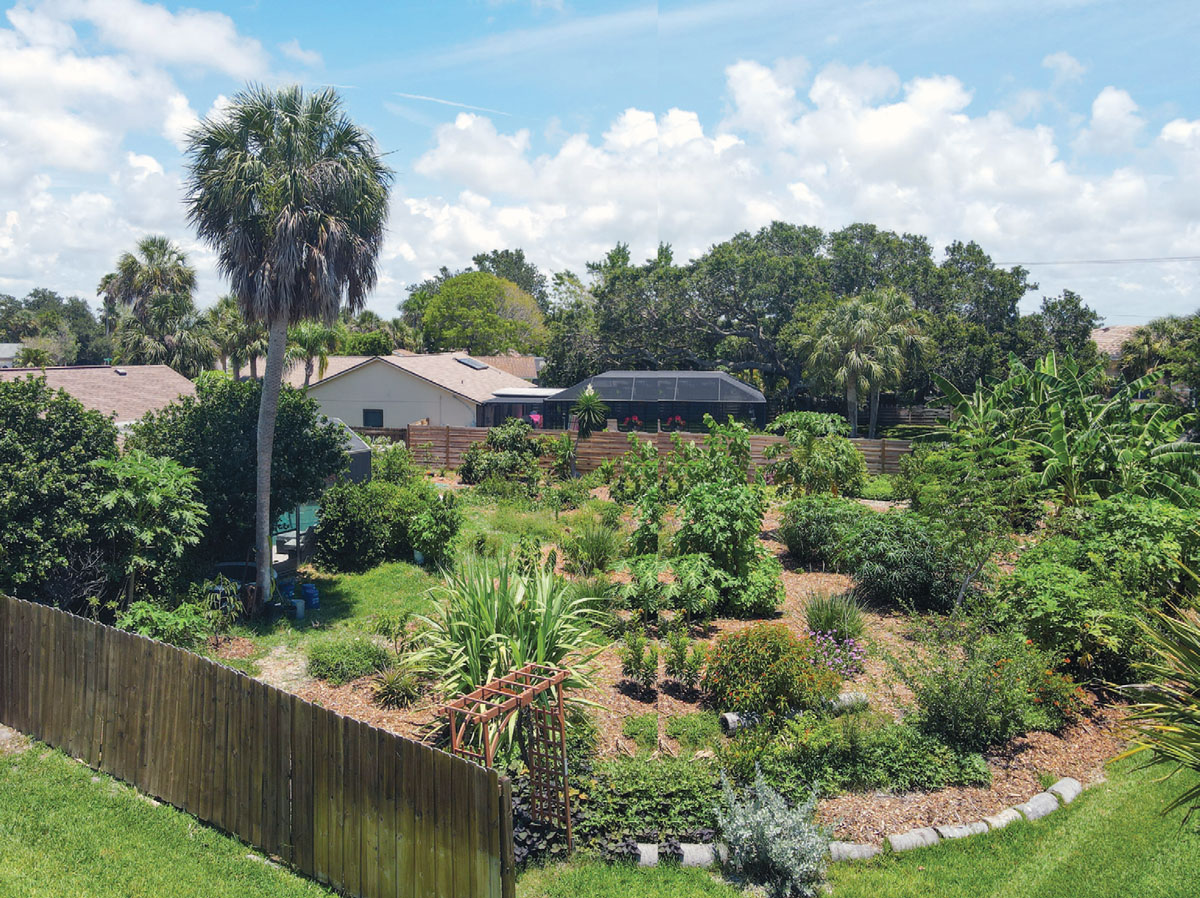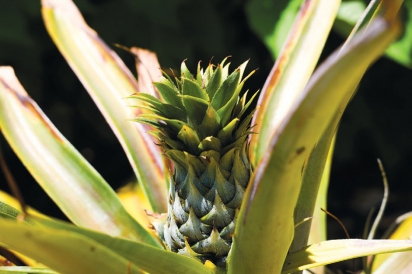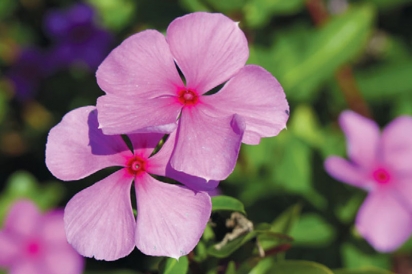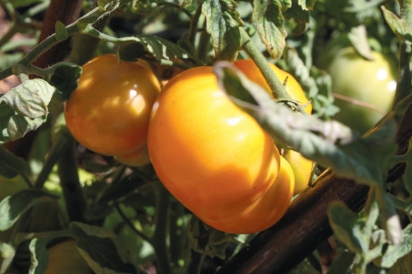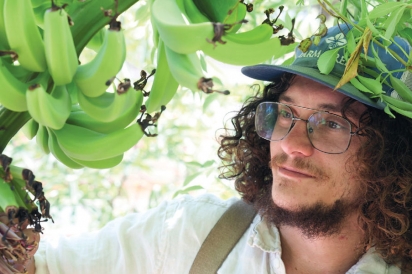Food Forest
What is a food forest? What is a microforest? What’s the difference between a food forest, a microforest, and a backyard garden? To help us understand what it’s all about, we found just the right person here in Sarasota: Zach Zildjian of ZZ Design Service creates resilient agroecosystems and native landscapes in the Sarasota area. He designs and installs both food forests and microforests for residential as well as corporate clients.
A food forest, also called a forest garden, is a diverse planting of edible plants. The term was coined in the 1980s, as it mimics patterns found in nature to build a self-contained food-producing ecosystem. Food forests are three-dimensional designs, with life extending in all directions—up, down, and out. Consisting of different layers of plants including vegetables, fruit- or nut-bearing trees, shrubs, bushes, and dense ground cover, food forests protect the soil and help retain moisture. More than a way to grow food, food forests build connections with the land, support wildlife, and are a way to promote resilience in our local community and economy.
“It is a gift that we are able to grow so many fruit trees here in South Florida that you won’t really see growing anywhere else in the country,” says Zach, adding that one of the greatest rewards of creating a food forest is the experience of watching everything grow before your eyes.
Microforests, meanwhile, are high-density, multilayered indigenous forests planted in urban spaces that act as self-sustaining ecosystems that reconnect fragmented habitat and restore biodiversity (according to lamicroforests.com).
Thanks to their high density, micro-forests create a forest-like habitat much faster than traditional tree plantings. Microforests rapidly convert underutilized land into productive native habitat that has a multitude of environmental benefits.
Food forests and microforests are two emerging movements within urban environments. Some of the benefits include carbon sequestration from the atmosphere into the soil, erosion control, soil-health restoration, urban cooling, urban-wildlife habitat, “forest bathing” for local residents, and community-environmental education. Additional perks of these types of resilient landscapes include reducing or eliminating both the need for chemical fertilizers and the need for regular mowing and extensive maintenance.
A New College of Florida graduate with a degree in environmental science, Zach is passionate about educating the community on the importance of food quality, its origin, and health implications. He became a foodie at a very young age thanks to both his parents being chefs. After he was diagnosed with an autoimmune disease, they set out on a family journey to heal through food as medicine. Learning about what foods are inflammatory shaped his understanding of food and its impact on health.
Zach says that researching his thesis related to carbon sequestration and trees piqued his interest in finding everyday solutions to help against environmental destruction and climate change. While at New College he worked in the gardens at the Florida House, learning about permaculture and food forests.
Helping families to connect with their local environment and grow their own food is what Zach says inspires his work. He believes that encouraging people to learn about the importance of growing their own food can lead to more community resilience. “The excitement I get from checking my plants and seeing the bees buzzing around doing their thing is something I want everyone to experience.” he says.
At the New Gate Montessori School Zach is working with middle-school students and teachers to guide them through the process of creating their own food forest on campus. Zach and his team are also working with the Mangrove School of Sarasota to plant a quarter-acre microforest at their new campus this summer.
“Working with the kids and seeing their enthusiasm is exciting,” he says. “I hope it inspires a continued interest in plants and the environment.”
In the face of the ever-worsening habitat destruction, it is important to take any steps we can to create rich habitats in our own backyards. One way to do that is to start your own food garden.
ZZ Design Services specializes in native and edible landscaping as well as larger-scale habitat restoration. In the last year and a half, Zach has worked with Suncoast Urban ReForesters (SURF) to design and manage the planting of four high-density microforests in the Sarasota area totaling upwards of 7,500 native plants across a total of two acres. You can enjoy one of the most recent public microforests at Heritage Harbor Park off of State Road 64.
To learn more about how you can make a difference, contact Zachary
Zildjian at foodforestdesigns@gmail.com. 413-230-4688


